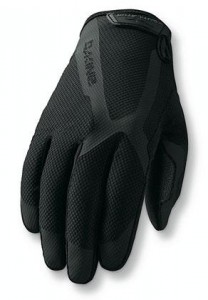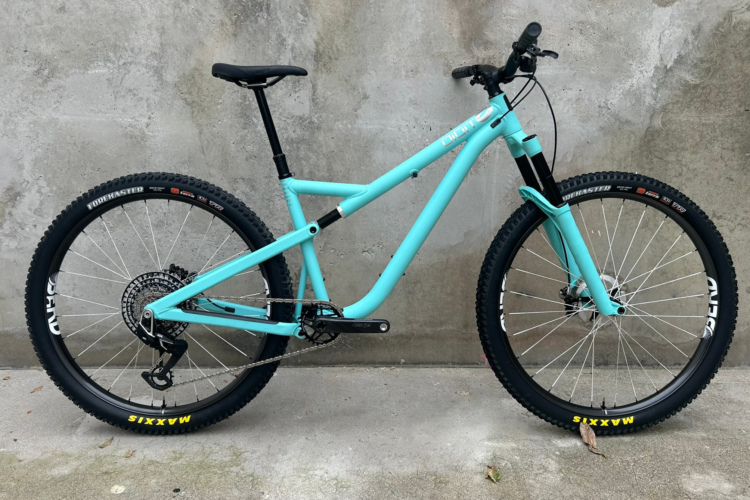Who actually says “hydration pack?”
Some brands are so ingrained in the public image their name becomes synonymous with an entire product category. Nobody goes to the grocery store to pick up some “flavored gelatin”; they go get some Jell-O, regardless of what brand it may be. So it was with many mountain bikers who purchased their first hydration pack years ago when Camelbak dominated the scene. I’m one of those: I bought my first 70oz, featureless Camelbak with my first mountain bike in 2000. Since then, I have acquired two more for myself and a handful for my family. When he head out for a hike, bike, or trail run, we always try to make sure we remember our “Camelbak.”
Being first to market can establish a barrier to entry for potential competition as many folks will simply stick with what they know. So when I was offered the opportunity to review the Dakine AMP 12L, I figured this would be a great opportunity to see if my long-established brand loyalty was valid or maybe a bit misplaced.
What about the features?
I don’t own a smartphone. To me, a phone serves one purpose—so I can call (or be called). I look at hydration packs the same way—they provide me with water and a place to carry some food and the bare necessities required to recover from a minor mechanical on the trail. Looking at the list of features on this pack, I figured it had more than a few I would never need—just give me 100oz of water in the most compact package possible and don’t waste resources building in all the bells and whistles. However, after some use, I decided most of the features were quite welcome.
Unique reservoir
I like the design of the included Hydrapak reservoir, which has some nice touches. The top load certainly makes filling and cleaning easier, but there are a couple other things that caught my attention. There is a rib that runs part way down the center of the bladder, which keeps the bladder from bloating outward when filled; the bladder fills “up” rather than “out,” which makes the full bladder easier to slide into its compartment. There’s also a quick-release where the bladder connects to the tube, making separating and rejoining far easier than on a traditional “just force it into place” arrangement–great for cleaning.
I did find the flow from the bite valve to be a bit weak, but that wasn’t a problem riding in Colorado in January and February. I might want more flow when I hit Fruita or Sedona, or even here in the Rockies come summertime. I’m hoping the unique design is more durable than the bite valves I’ve used in the past which tend to leak after very little use. If so, it’s a worthwhile trade. I could always sub in another bite valve if this one proves impractical in the summer months.
For more on Hydrapak reservoirs, check out this hydration pack review with the original reservoir and this review featuring the Shape Shift technology (included with the Dakine AMP 12L.)

Air Mesh Suspended Back Panel
The air mesh back panel is probably my favorite feature of all in the pack. There is a web of fine mesh that rests on the back, but is separated from the main pack by a few inches. I was concerned by this design for two reasons. First, this was wasted space which could otherwise be used for storage. Second, whatever weight you were carrying would be further away from your back, thus affecting balance.
Regarding the first concern, the pack showed no signs of having inadequate storage for its intended purpose, which is anything short of an all-day epic or long ride requiring lots of support (for that, have a look at the Nomad 18L or Drafter 18L). Regarding the second, that concern turned out to be completely unfounded as this was by far the most comfortable, stable pack I’ve ever ridden with, including much smaller 70oz/no storage setups.

Deployable Helmet Carry
I never ride without a helmet, so I didn’t see the point in this feature. However, when deployed, the helmet carry made a perfect place to stash my knee/shin guards and forearm/elbow pads. Maybe one day I’ll even try stashing the helmet on a long fire road climb to keep my noggin cool when I’m not so concerned about safety.
The mesh side pockets make for a convenient place to store that Gu and Clif Bar while the fleece lined and padded phone pocket is a smart addition. There’s also a fleeced lined sunglass packet you can use to stash spare shades without fear of scratching lenses so you can safely swap out pairs on a whim.
Internal organizer pockets
I just throw everything in my old Camelbak. Do I really need to carry so much stuff that it has to be organized? Well, not really, but there is one genuinely valuable aspect to this feature. Keeping all that stuff in its own pocket keeps it secure and in one place, even while riding the gnarliest lines. When even a minor weight shift can be distracting, the sudden lunge of a multitool from left to right can take your mind off where it needs to be. This is no longer a worry with the AMP 12L. I was particularly impressed with the long, vertical, tubular pocket; perfect for securing the all-important mini pump.
Deployable rain cover
I live and usually ride in a semi-arid or arid environment, so this feature seems at first to be overkill. There are times, however, where major rains can bust out without warning in the high country and I have had a few rides where everything in my pack, right down to my peanut butter and jelly sandwich, was soaked completely through. I’m sure there will be a time or two where I’ll be glad to have this.
Removable Waist Belt
I have to admit, this one baffled me, and not just because I’d never bother to remove the waist belt. I just couldn’t see how this thing was removable. It’s stitched in there solid and direct with no sort of intervening release mechanism.
The Final Verdict
If you want to cut to the chase, here goes: I have a new #1 pack, hands down. The features are nice and definitely an improvement over any hydration pack I’ve owned in the past, but the real deal closer is how perfectly this pack fits and rides. People like to talk about how a great piece of bike gear “becomes an extension of themselves.” The Dakine AMP 12L takes it a step further and seems to become one with the rider—this is the first pack that I truly forget is on my back through an entire ride covering a variety of terrain.
The mesh panel allows my back to vent and breathe rather than pool sweat and the perfectly secure fit keeps my center of mass constant no matter what gyrations I’m going through. Dakines tend to cost more than Camelbaks of comparable volume, but I find the fit and features to be worth every penny. I believe my other packs will now gather dust, except for the really big one I need for 8+ hour epics. And when it comes time to replace that one, I’ll certainly be considering Dakine’s big bag as a leading candidate. Other than the minor gripe about the flow rate, it’s hard to find fault with this pack.
MSRP: $125.00
Thanks to Dakine for providing this pack for review.





















